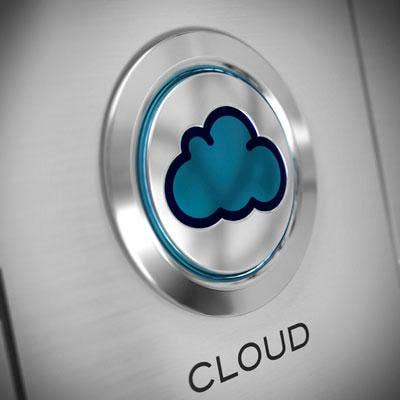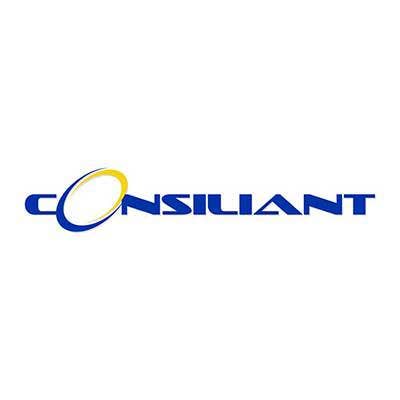On The Front Lines: 5 Solution Providers On How Their Vendor Partners Have Risen To The Cloud Storage Challenge

Building A Better Hybrid Storage Cloud
Ah, yes, the cloud, with its promise of easy-to-deploy and easy-to-manage unlimited compute power and storage capacity at prices that will make on-premise data centers obsolete.
The reality, however, is that public clouds are not that easy to manage. They may provide unlimited storage capacity, but the cost of moving data into and out of the cloud is typically higher than expected. Add in potential security risks and the difficulty of migrating data from one cloud to another, and things look far less rosy.
As it turns out, legacy storage vendors--Dell EMC, Hitachi Data Systems, Hewlett Packard Enterprise, NetApp, and IBM--have risen to the challenge by leveraging their decades of storage technology to build cloud storage infrastructures tuned to customers' environments by combining on-premise storage and public clouds into hybrid clouds.
For CRN's 2016 Cloud Storage Week, we talked with channel partners from the top five storage vendors who are on the front line of bringing their technologies to customers to see how those vendors have adopted to the cloud. The common answer was, yes, they've done very well. Here's what these solution provider executives had to say.

Opportunities: Traditional Storage Technology Integrating With Modern Clouds
Top-tier storage vendors not only have to compete with the likes of Amazon Web Services or Google Cloud, they must also compete with the perception that they do not represent the future of storage.
It is a perception that is quite wrong, said John Woodall, vice president of engineering at Integrated Archive Systems (IAS), a Palo Alto, Calif.-based solution provider and NetApp partner.
Woodall told CRN that there's a lot of opportunity for traditional storage vendors to maintain and even increase their relevance to the cloud.
"While some workloads will shift to the cloud completely, most will need flexibility," he said. Marketing data may move immediately to the cloud. But back-end operations may stay on-prem while developers go toe the cloud. Customers will be looking for creative, elegant solutions. And hybrid clouds will be the model."
The top legacy storage vendors have already invested heavily in "creative, elegant solutions," but in many ways have only just started to scratch their cloud storage potential. To see where they are and what they expect, turn the page.

I BM Partner: Mainline Information Systems, Tallahassee, Fla.
John Boyle, Senior Client Executive
For the first time in a long time, I'm cautiously optimistic about IBM's storage strategies. IBM has set up storage that works with other vendors, and we can use it to help transition customers to the cloud.
I've seen IBM stumble in the past. But the acquisition of Cleversafe and the appointment of Ed Walsh as general manager of IBM storage and software-defined data centers shows IBM really gets it.
IBM's Spectrum Scale and Spectrum Control are the two applications I begin conversations with. Spectrum Control leads to the software-defined data center. In a cloud setup, it's a fast way to get your arms around storage while adding additional types of storage. Spectrum Scale allows data to move between external and internal data centers. Together, they are a bi-directional way to tackle the same problem. Spectrum Control helps get on-premises storage up immediately, and sets up quickly. Spectrum Scale is key to expanding storage and understanding the licensing.

Dell EMC Partner: Fusionstorm, San Francisco
Mike Souza, SVP, Sales, Marketing
Before its EMC acquisition, Dell didn't really have a cloud strategy. It had plug-ins to archive data to AWS and other cloud services, and made AWS a disaster recovery target. The closest thing it had to cloud storage was Virtustream and vCloud Air.
With EMC, Dell now has Elastic Cloud storage, which is expensive but offers good service. It also has VxRack, which has eloquent plug-ins to AWS and vCloud Air. Virtustream and VxRack could become best-sellers.
Dell EMC has done a good job of building cloud interfaces, but was late to the game. EMC three years ago rolled out ScaleIO, and we all thought it was a great software-defined storage platform. But nobody at EMC wanted to sell it. They wanted to sell VNX and VMAX. ScaleIO is a big seller now. But they should have started sooner.
Dell EMC has a couple of storage platforms being used by our customers to build clouds. But the real momentum will come from the EMC acquisition.

NetApp Partner: Integrated Archive Systems, Palo Alto, Calif.
John Woodall, VP, Engineering
NetApp's cloud storage strategy makes two assumptions: There's movement of certain workloads to the cloud, and that movement varies according to the workload and the timing. NetApp understands that over the next five to 10 years, the right mix of hybrid clouds is the best way to manage the cloud. And NetApp provides the right mix.
NetApp has embraced the cloud. They're not restricting the cloud. They're letting customers do their cloud their own way. NetApp has a really good strategy of, 'Everywhere you look there's a piece that can help you work with your cloud of choice.'
Look at NetApp Private Storage, which puts storage next to the compute in Equinix data centers and connects to the cloud. Even more cloud-native is NetApp Private Cloud as a Service, which lets customers use NetApp technology on the cloud without any capital expense.
Or look at Cloud Sync, where NetApp allows customers to pick and choose a cloud but not be locked into any particular clouds or data management paradigms.

Hitachi Data Systems Partner: Consiliant Technologies, Irvine, Calif.
George Lindsey, Solutions Architect, Account Executive
Hitachi's cloud offerings are really built to order, including hybrid cloud to on-prem and hybrid to cloud providers like Amazon and Google. They're really putting cloud technologies on the floor.
When you look at Hitachi solutions like HNAS [Hitachi NAS Platform] and HCP [Hitachi Content Platform], they support both on-prem clouds and other clouds. HCP is their go-to platform for backups, cloud storage and deep archiving. It's very flexible. It's Hitachi's best-kept secret.
HNAS and HCP lets customer build on-prem clouds with any flavor of storage, including high-speed, archival, and S3-compatible, and make it really easy to get to Amazon or other clouds. They let customers set policies to migrate storage to Amazon or Azure or other clouds, and the host has no idea the data was moved. They also provide metadata to do searches without bringing data from the cloud back on-prem. Or data can be migrated from one cloud to another easily without the host knowing about it.

Hewlett Packard Enterprise Partner: Nth Generation Computing, San Diego
Dan Molina, Chief Technology Officer
HPE has long been focusing on helping customers implement hybrid clouds, especially since it exited the public cloud business a year and a half or two ago. HPE has been really looking at creating a community that can help customers move on the path to hybrid clouds, or hybrid IT, as HPE calls it. They've placed big bets on open-source cloud technology with their HPE Helion offering. It's a nice solution to help customers get control of their data back. Many customers are moving their applications directly to clouds like Amazon and Azure, and some day Google. But it's risky.
HPE has a community of partners offering overlapping technologies to benefit their customers instead of competing with Amazon. HPE has also increased its partnership with Azure, so customers looking for hybrid cloud solutions with on-premises storage will see HPE use the Microsoft Azure Stack, or MAST, to build in automation. IT looks like a public cloud. HPE gets the cloud interface, Microsoft gets on-prem, and customers get a hybrid cloud.